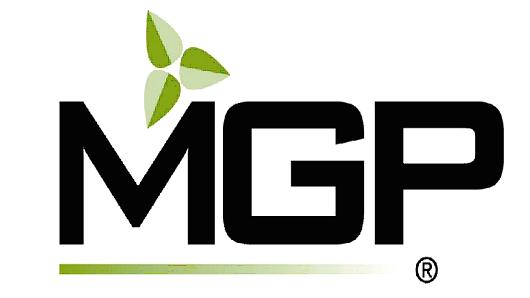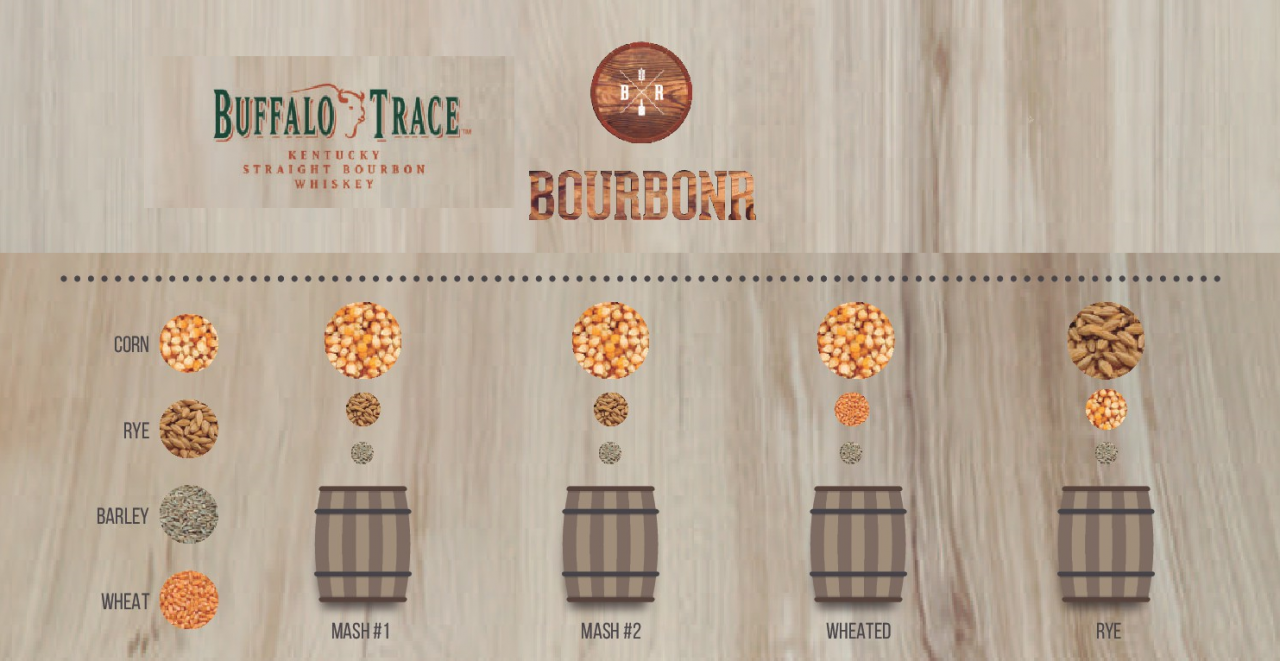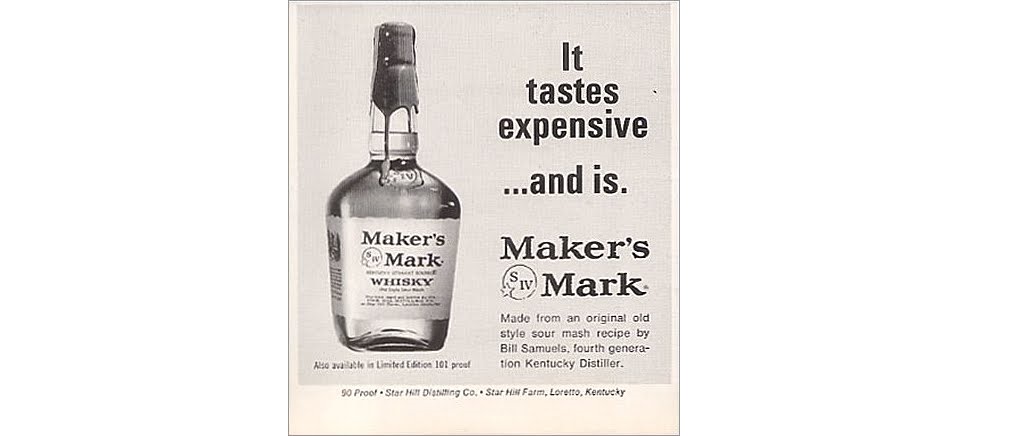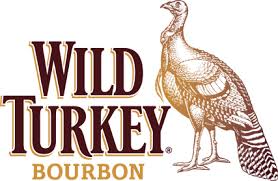As Bourbonr’s continue their thirst for more information, details like mash bills, barrel char and barrel entry proof, and their affect on taste, gain more attention. Let’s begin with a bourbon’s mash bill. We already know that legal requirements mandate 51% corn for bourbon but what about the other 49%.
A mash bill is the mix of grains used to make bourbon. Theses grains are cooked and fermented to begin the bourbon making process. There are typically three grains in every bourbon mash bill: Corn, Rye or Wheat, and Malted Barley. Each grain percentage will vary based on distillery but generally, distilleries use three types of mash bills, Low Rye 8%-14%, High Rye 15%-35% and Wheated 18%-20% (Bonus: Rye mashbill 51%+). You can review the Distillery Summary to see which mash bills are used by the major distilleries.
Corn – This is the base of bourbon and adds a majority of the sweetness in bourbon. The actual corn flavor fades with aging, but if you’ve ever tried Buffalo Trace White Dog, you’ll immediately pick up on the corn taste. Corn ranges from 51%-80% of the mash bill for most distilleries. If it drops below 51%, it’s no longer bourbon. If there’s more than 79%, we now have “corn whiskey” by legal definition.
Rye – Mainly used as a flavoring grain, rye adds the spicy, minty or cinnamon flavor of bourbon. Try a rye whiskey like Bulleit or Smooth Ambler Old Scout Rye to pick up on the flavor notes of rye. You can even try eating rye toast to get a better idea of the flavoring rye adds to bourbon. Rye ranges from 8%-35% of the mash bill for most distilleries.
Wheat – Wheat is the alternate flavoring grain. Wheated bourbons were made famous by Pappy Van Winkle but result in a sweeter bourbon with more toffee and vanilla flavor notes. Try a rye bourbon next to a wheated bourbon like Weller Special Reserve or Makers Mark to notice the wheat flavor. Wheat ranges from 18%-20% of the mash bill for most distilleries.
Barley – While often overlooked in bourbon malted barley plays a significant role in the bourbon mash bill. Barley is there for its ability to convert starches to sugar. Most think of malted barley as the main ingredient (sometimes only) in scotch. Try a single malt scotch like Macallan next to bourbon to pick up on the flavor of bourbon developed from barley. Barley ranges from 5%-12% of the mash bill for most distilleries.
Bourbon Homework
You’re probably wondering “what do I do with this information?” The answer is simple. Drink bourbon. Drink bourbon and note the differences in taste between different mash bills. Here’s your “bourbon” homework assignment. Set up a tasting between to bourbons that are similar in all other aspects (age, proof, distiller, etc.) except mash bill. An easy choice is Jim Beam Bottled-In-Bond vs. Old Grand-Dad Bottled-In-Bond. This is a great exercise and both bottles can be purchased for around $20. Taste them side-by-side and note the differences.
It would be hard to find two more perfect bottles for a mash bill tasting. They are from the same distillery, same proof and most likely the same age (or close). The difference you’re tasting is the higher rye content of Old Grand-Dad. The OGD has around 14% more rye than the Beam. This greatly reduces the sweetness from the corn and increases the spice of the rye. You can read my tasting of these two bourbons here.








